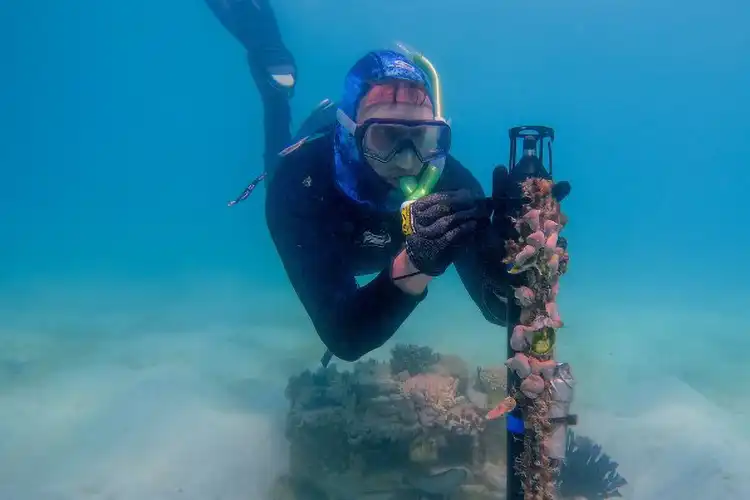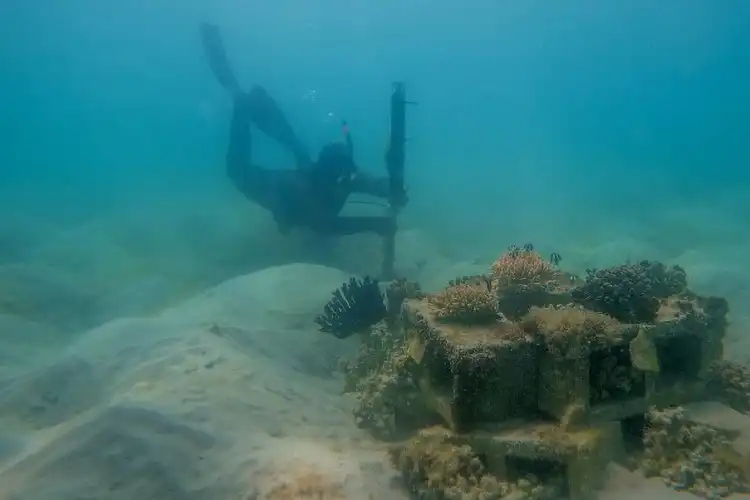
A noisy reef is a healthy reef – and many divers will be familiar with the constant sounds of popping and clicking as its denizens go about their business.
A recent study by scientists from the Australian Institute of Marine Science (AIMS) has found that listening carefully to those sounds can help us understand the details better, such as changes in reef diversity and the distribution and abundance of species.
The scientists say that it might even be possible to identify new species through the sounds generated across a coral reef, and have been refining techniques to help them hear these details more clearly.
In a series of papers, AIMS researchers and partners have found that coral reef soundscapes vary significantly across reef habitats and can reflect subtle differences in biological communities.
They also tested different analytical tools and methods for recording and analysing underwater sound that will help scientists discriminate between different sounds, and improve the design of monitoring systems.
Related articles

‘Coral reefs are vital ecosystems supporting livelihoods, biodiversity, industries like tourism and fisheries and providing coastal protection,’ said Dr Miles Parsons, AIMS acoustic scientist and senior co-author of the paper. ‘To assist them under a changing climate, we need to understand them, and monitoring their noises can help.’
‘It also captures information on parts of the underwater community that are otherwise difficult to sample, such as cryptic species that make specific noises, and records behaviours at times and in conditions when it’s difficult to sample, such as deep, dark or dirty water when visual surveys won’t work.
‘Our new research explores the spatial scales at which we can tease out this information and what types of habitat might be driving them.’
AIMS and Curtin University PhD candidate Juan Carlos Azofeifa Solano, who led two of the papers, said the researchers used data from three sites: Lizard Island in the Great Barrier Reef, Coral Bay at Ningaloo World Heritage Marine Park and Guanacaste Conservation Area in Costa Rica.

The scientists used a tool called the Soundscape Code to help them understand the characteristics of the reef soundscape. This helped them to detect different soundscapes within the same coral reef, at monitoring stations just 30 metres apart.
‘In our research at Lizard Island, we found we could discriminate between habitats that did and did not include significant proportions of a type of coral called Pocillopora just by listening to the associated soundscape,’ said Mr Azofeifa Solano.
‘Our results provide evidence that a single reef might require more than one sampling site to obtain a representative characterisation of the soundscapes from different habitats occurring in the same reef.’
In another paper, led by AIMS postdoctoral researcher Dr James Kemp, the team explored how the placement and orientation of hydrophones affect the recording of reef sounds, and how processes used to analyse the recordings require standardisation and validation to ensure reliable comparisons.
‘This research contributes to the advance of underwater acoustics as a tool for ecological monitoring, ground-testing commonly used and novel methods, integrating them with field-based ecology, and assessing potential sources of bias,’ said Dr Kemp, ‘which is essential to develop reliable long-term monitoring programs.’
This article was reproduced with permission from AIMS – check out the original (with links to the papers involved) here and learn more about AIMS reef monitoring programs at www.aims.gov.au


